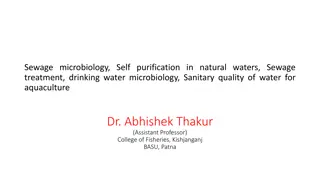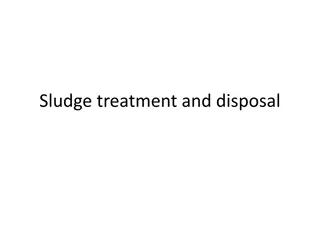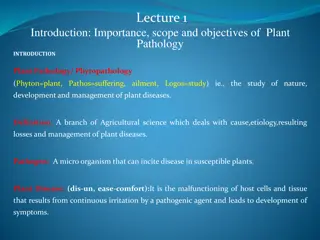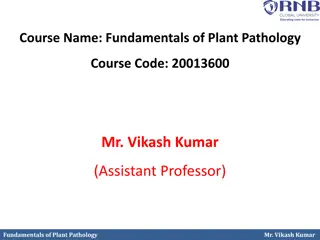
The Importance of Modern Sewage Treatment Plant Services
We want to construct a wastewater treatment facility that is basically flawless and eco-friendly. The WOG Group is a collaboration of scientists and engineers devoted to improving sewage systems. //woggroup.com/brewery-waste-water-plant.htmln
Download Presentation

Please find below an Image/Link to download the presentation.
The content on the website is provided AS IS for your information and personal use only. It may not be sold, licensed, or shared on other websites without obtaining consent from the author. If you encounter any issues during the download, it is possible that the publisher has removed the file from their server.
You are allowed to download the files provided on this website for personal or commercial use, subject to the condition that they are used lawfully. All files are the property of their respective owners.
The content on the website is provided AS IS for your information and personal use only. It may not be sold, licensed, or shared on other websites without obtaining consent from the author.
E N D
Presentation Transcript
The Importance of Modern Sewage Treatment Plant Services Sewage treatment is a critical component in addressing the modern world's environmental concerns. That is the role played by contemporary sewage treatment plant services. By efficiently treating wastewater before it is released back into the environment, these services are essential to the upkeep of a clean and healthy ecosystem. Because of technological advancements, sewage treatment facilities have progressed and become more effective than ever. They employ various techniques, including chemical, biological, and physical, to eliminate dangerous impurities and toxins from the water. This protects the ecosystem and public health by guaranteeing that the water bodies that receive the treated effluent do not become contaminated. Modern sewage treatment plant services not only aid the environment but also have financial benefits. When sewage is treated effectively, important resources like sludge and biogas are recovered and can be used for farming and energy production. This lessens reliance on fossil fuels and opens up new avenues for sustainable growth. We can ensure a cleaner, greener future and improve the health of our world by adopting and funding contemporary sewage treatment plant services. Thus, let's value these services and make the best decision for the environment. The Evolution of Sewage Treatment Sewage treatment has changed dramatically throughout time as cultures realized how critical it was to manage and treat wastewater to safeguard the environment and public health. An outline of the development of sewage treatment is provided below:
Ancient Times: The first drainage and water purifier systems were created in ancient civilizations including the Indus Valley Civilization and ancient Rome. These methods of removing garbage from populous regions rely on gravity flow and open channels. Industrial Revolution: As a result of the growing urbanization brought about by this period, sewage generation became more concentrated and population sizes grew. Untreated wastewater from early sewage systems was frequently dumped into rivers and other bodies of water, leading to contamination and disease epidemics. The establishment of Sewage Treatment Plants: The necessity for treating sewage surfaced in the late 19th and early 20th centuries. Cities like London and Paris hosted the first modern sewage treatment plants. Before releasing wastewater into bodies of water, these plants used biological and physical techniques to remove organic debris and sediments. Improvements in Treatment Technology: As treatment technology advanced, sewage treatment became more effective and efficient over time. Primary sedimentation tanks, biological treatment techniques like activated sludge and trickling filters, and sophisticated tertiary treatment techniques like filtration and disinfection are some of the significant advancements in wastewater treatment. The Importance of Modern Sewage Treatment The following justifies the critical need for modern sewage treatment: 1. Protection of Groundwater: Sewage that is not sufficiently handled has the potential to contaminate groundwater, which is an essential supply of safe drinking water for many communities. Groundwater resources are safeguarded and their long-term viability is ensured by efficient sewage treatment.
2. Preserving Public Health: The spread of waterborne illnesses is stopped when sewage is properly treated to get rid of dangerous germs and pollutants. It guarantees that the water supply is still safe for recreational and human use. 3. Protection of Groundwater: Sewage that is not sufficiently handled has the potential to contaminate groundwater, which is an essential supply of drinking water for many communities. Groundwater resources are safeguarded and their long-term viability is ensured by efficient sewage treatment. 4. Protection of the Environment: Untreated sewage can contaminate waterways, causing the deterioration of aquatic habitats. By eliminating pollutants, nutrients, and poisons from wastewater, modern sewage treatment lessens the negative effects on rivers, lakes, and seas. Different Types of Sewage Treatment Plants Sewage treatment plants come in several varieties, and they all use distinct technologies and procedures. Typical varieties consist of: 1. Conventional Activated Sludge Plants: These facilities use the activated sludge process, which breaks down organic matter by mixing wastewater with an activated sludge culture of microorganisms. Before releasing, the treated water is necessary to clean. 2. Sequencing Batch Reactor (SBR) Plants: Plants that run in batch mode are known as sequencing batch reactors (SBRs), and they treat wastewater in stages that include aeration, settling, and decanting. SBR plants have strong nutrient removal capabilities, adaptability, and energy efficiency.
3. Trickling Filter Plants: These plants cultivate organic matter-breaking microbes by growing them on a bed of stones or plastic media. The media is dripped with wastewater, which encourages biological treatment. After that, the effluent is cleaned and clarified. 4. Extended Aeration Plants: Aeration is used by extended aeration plants, such as activated sludge plants, to encourage the growth of microbes that break down organic materials. They are appropriate for smaller communities because they frequently have smaller tanks and longer aeration durations. We can reuse the water from the water filtration system once the particles have been removed and the water has been brought to a quality drinking water level. It is necessary to produce flawless, knowledgeable content. This type of filtering technology is expected for drinking water systems because of several features. Key Components of a Modern Sewage Treatment Plant: Several essential elements are usually present in a contemporary sewage treatment plant: Influent Pumping Station: Influent pumping stations are used to gather and pump incoming wastewater into the treatment facility. Initial Treatment: The entering wastewater is subjected to an initial treatment process that involves grit removal, which gets rid of sand and small debris, screening to remove large solids, and occasionally a sedimentation process to get rid of heavy solids. Primary Treatment: Under primary treatment, wastewater enters primary sedimentation tanks or clarifiers, where suspended solids are allowed to sink to the bottom as sludge by the action of gravity. The primary effluent, or clarified water, is thereafter sent to additional treatment procedures.
Secondary Treatment: Using biological processes, organic matter is eliminated during secondary treatment. Common techniques include the decomposition of pollutants by microorganisms attached to media in trickling filters or the consumption of organic materials by bacteria in the activated sludge process. Tertiary Treatment: Some plants use tertiary treatment as an extra step to further polish the effluent that has been treated. To get rid of any leftover impurities, it could involve techniques like filtering, enhanced oxidation, or disinfection (such as UV or chlorination). Sludge Treatment: After undergoing primary and secondary treatment, sludge is subjected to additional treatment. To lower volume and stabilize the sludge, this may entail thickening, dewatering, and occasionally anaerobic digestion or cremation. Effluent Discharge: The cleaned effluent is released into rivers or the ocean, or used for other purposes, provided it satisfies regulatory criteria and quality requirements. There are many wastewater treatment plants available today. We will focus on one such sewage treatment technique, which is the sewage treatment facility employing MBR technology. Contaminated water is stored in specially designed storage containers in sewage treatment plants as part of the wastewater treatment process. One of the procedures this facility uses is waste extraction from wastewater effect. https://woggroup.com






















